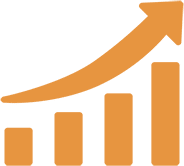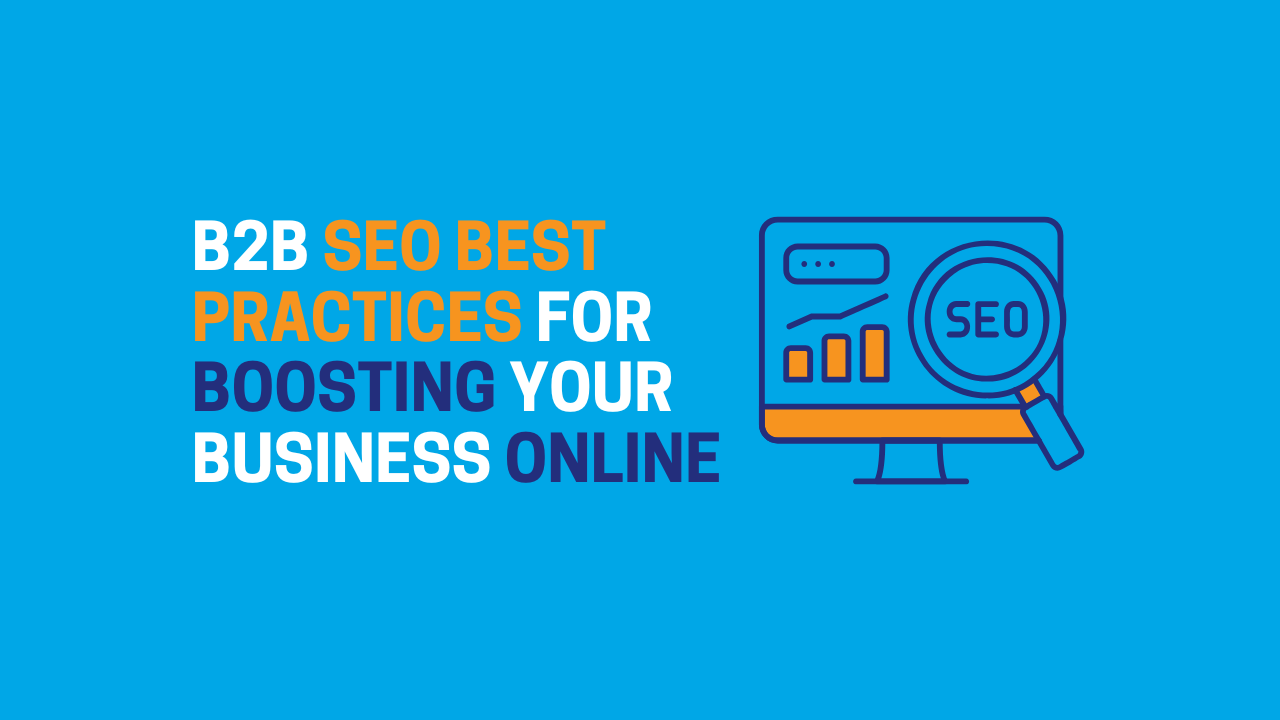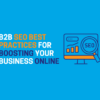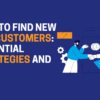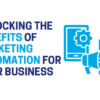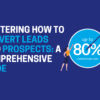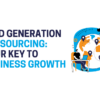When it comes to expanding a B2B business online, having an effective SEO (Search Engine Optimisation) strategy in place is no longer just a luxury, it has become a must-have. B2B companies often outpace consumer-focused firms when it comes to SEO strategies. However, B2B companies stand just as much to gain from an optimised organic search presence. But where should they start and how can they distinguish themselves in an increasingly crowded online environment? This blog covers tested B2B SEO best practices designed to increase their online presence, attract high-value clients, and drive meaningful business outcomes. From technical measures such as keyword targeting to those aligning with buyer intent. We will cover it all here.
1. Focus on High-Intent, Niche Keywords
Target Keywords Your Ideal Clients Are Actually Searching For
An important aspect of B2B SEO strategy is understanding what keywords your ideal clients are actually searching for, with high-intent niche terms reflecting specific needs or solutions they actively search for. Do thorough research into their pain points, challenges and goals before creating an SEO keyword strategy that is tailored specifically towards meeting those demands.
Use Tools like SEMrush, Ahrefs, and Google Keyword Planner
SEO tools like SEMrush, Ahrefs and Google Keyword Planner can make your life a lot easier when it comes to identifying actionable keywords. By tapping into their data streams you can uncover search volumes, competition levels and related keyword opportunities. Using this information you can effectively target highly specific words that align with audience intent for way better visibility and ROI.
Balance Keyword Difficulty with Search Volume
Get the maximum SEO impact by finding a balance between keyword difficulty and search volume. While high-volume keywords may seem like the golden ticket, they often come with steep competition. Targeting niche keywords with moderate search volumes but lower competition can help your site to gain ground faster while simultaneously drawing in qualified traffic that is more focused.
2. Optimise for Every Stage of the Buyer Journey
Map Keywords and Content Types to Each Phase (Awareness, Consideration, Decision)
To effectively optimise for the buyer journey, it is necessary to align keywords and content types with each phase. During the awareness stage, target broad informational keywords with blog posts or educational videos as your content delivery mechanism. During the consideration stage use comparison-focused keywords along with case studies or product overviews as your form of presentation. At the decision stage include testimonials or free trial offers which focus on driving conversions as their deliverance mechanism.
Use Gated Assets (eBooks, Whitepapers) for Lead Capture
Gated assets such as eBooks, whitepapers and exclusive guides can be powerful tools for lead capture. By giving valuable, in-depth content tailored to specific buyer stages and requiring users to provide contact information in exchange for access, these gated assets not only position your brand as an authority in its field but also help capture high-intent leads that you can nurture along the funnel.
Internal Linking to Guide Users Deeper Into Your Funnel
Internal linking plays a big part in helping users move further through your sales funnel. By linking within your site to awareness-level pieces and then onward to more in-depth articles (like product comparisons), users are directed toward conversion-ready resources without them knowing it. This strategy improves your site navigation, keeps users engaged for longer, and increases conversion chances through subtly steering users towards decision resources that could increase your likelihood of conversions.
3. Build a Strong Technical SEO Foundation
Improve Site Speed, Mobile Usability, and Secure HTTPS Connections
Site speed is a very important ranking factor, directly impacting user experience and search performance. Optimise image sizes, limit heavy scripts, leverage browser caching to boost the speed. Make sure you have mobile usability as many visitors access sites via mobile devices. Prioritising HTTPS connections as this secures data exchanges while building user trust.
Ensure Crawlability with Proper Sitemap and Robots.Txt Files
To ensure search engines index your site effectively, crawlability is very important. Create an up-to-date XML sitemap to guide search crawlers around your site structure while configuring a robots.txt file to manage which areas are accessible to bots. Both these measures will help prevent search crawler errors while optimising efficiency of crawling bots.
Use Structured Data to Enhance SERP Appearance
Search engines use structured data as context for better understanding your site content. Use relevant schema mark-up to increase search engine results page (SERP) presence and rich snippets such as star ratings, event details or product info that will enhance visibility while encouraging clicks by making listings stand out to users.
4. Create Authoritative, Relevant Content
Blog Regularly About Customer Pain Points and Industry Insights
Establishing authority and relevance with your audience requires regular blogging on customer pain points and industry insights. Write blogs that address customer challenges with solutions that offer real value to them. Discuss industry trends as an “expert” to position yourself as an authority figure. Providing regular updates ensures your content aligns with the evolving audience needs and keeps them engaged.
Focus on Thought Leadership, Case Studies, and How-To Guides
Build credibility by producing thought leadership content that showcases your expertise. Case studies provide real-world success stories to demonstrate the value of your solutions while how-to guides provide practical advice while reinforcing your authority within an industry. See our real-world success stories…
Keep Content Up To Date To Maintain Rankings
Outdated content can have the opposite effect on search rankings and credibility. Regularly audit your website to identify older posts with outdated statistics, links, or insights and revamp them as soon as possible to remain competitive by showing both the users and search engines that your website provides dependable sources of information.
5. Earn Quality Backlinks from Trusted Sources
Quality backlinks from reliable sources are very important in increasing your website’s authority and search rankings, showing search engines that your content is credible and useful. Focus on earning quality backlinks from reputable websites within your industry in order to build credibility and bring organic traffic directly to your site.
Reach Out for Guest Posts on Reputable Industry Blogs
Guest posting on authoritative industry blogs is an effective strategy for building quality backlinks. When looking for guest posting opportunities, make sure they have strong domain authority, then pitch content ideas tailored specifically to their audience. Contributing guest posts not only increases backlinks but also expands your brand visibility and networking opportunities (not to mention backlinks).
Use Digital PR to Get Featured in Relevant B2B Publications
Use digital PR strategies to secure features in respected B2B publications. Create compelling press releases detailing new developments or insights within your organisation and share them with key industry publications. This not only brings in valuable backlinks but can also boost your brand recognition.
List in Respected Business Directories
Submitting your business listings to trusted directories with strong industry reputation, such as B2B services directories, is another proven method for building backlinks. Ensure your profile includes up-to-date contact info, an engaging business description and links back to your website in order to maximise the benefits of these listings.
6. Optimise for User Experience (UX) and Conversion
Improve Layout, Navigation, and Readability
A clean and intuitive website layout enhances the user experience and keeps the visitors engaged. Simplifying navigation menus to enable visitors to quickly locate information they’re looking for is important. Use clear fonts with concise headings to enhance readability. Use adequate spacing so visitors can interact easily with content without experiencing the dreaded “frustration”.
Place Clear CTAs and Contact Points Throughout Key Pages
Calls-to-action (CTAs) should direct users towards taking the desired actions that you want. Such as signing up or making purchases, so make sure that these CTAs are visible, visually appealing, and concise. Also make sure that there are contact points such as forms or email links on key pages so users have easy access to these interactions that will build trust and facilitate communication between the user and your business.
A/B Test Forms, Buttons, and Landing Pages for Lead Generation
Testing different design and content variations can dramatically increase your conversion rates. Use A/B testing to analyse elements like forms, button styles and landing page layouts compared with each other based on user behaviour to find which versions work most effectively. This data-driven approach helps optimise your lead generation strategy while increasing overall site performance.
7. Use On-Page SEO Best Practices
Write Compelling Meta Titles and Descriptions with Keywords
Creating eye-catching meta titles and descriptions that utilise primary keywords effectively are important for standing out on search engine results pages (SERPs). Titles should contain 60 characters maximum. Descriptions should convey value while remaining between 155 – 160 characters and include relevant phrases to encourage clicks and increase website exposure.
Use H1-H3 Tags Properly and Naturally Include Keywords
Proper usage of heading tags enhances both the user experience and your SEO. Your H1 tag should clearly state the page’s main topic while including primary keywords. H2 and H3 subheadings help organise content while naturally including long-tail keywords into its structure. This makes the content scannable while increasing your ranking on search engines for related searches.
Optimise Images with Alt Tags and File Names
Optimising images helps increase the load times and accessibility. Use file names that include descriptive filenames with keywords instead of generic labels like “image1.jpg,” as well as alt tags that accurately describe your images using target keywords. These practices help your SEO by enabling search engines to index your visual content effectively.
8. Leverage Local SEO for B2B Visibility
Optimise Google Business Profile for Local Search Presence
Make sure your Google Business Profile is fully optimised by providing accurate and complete information, including your business name, address, phone number, website and operating hours. Regularly upload photos, respond to reviews and use posts as a way of sharing updates. Keeping up-to-date also boosts your visibility in local search results while building trust with potential clients.
Target Geo-Specific Keywords If Your Business Serves Defined Areas
If your business operates in specific geographic regions, include geo-specific keywords into its website content, meta descriptions and headers to attract relevant traffic to those services in those specific locations. For instance “IT solutions in London.” Using localised keywords will make sure that you reach potential clients that are searching for services within those specific locations.
Use Local Citations and Reviews to Build Authority
Create consistent business information across platforms by listing your business on reliable local directories. Encourage satisfied clients to leave positive reviews as this can have an enormous effect on local rankings and customer trust. High-quality citations and reviews enhance your authority as they establish a stronger local SEO presence that attracts more attention from nearby prospective customers.
9. Align SEO with Your B2B Sales and Lead Gen Strategy
Ensure SEO Efforts Are Driving Qualified Traffic
Optimising an SEO strategy for B2B sales means targeting the appropriate audience with keywords and content that attract decision-makers and industry professionals. Analyse user behaviour and site metrics to ensure the traffic generated by SEO aligns with your ideal customer profile for maximum conversion rates and higher-quality leads.
Sync Keywords With the Language Your Sales Team Uses
One of the lead generation SEO techniques is maintaining continuity between your SEO and sales. This is important when merging these functions, so collaborate with your sales team to identify phrases and terminology prospects often use when communicating. Aligning SEO keywords with these phrases ensures better content relevancy, making it easier to convert website visitors into qualified leads.
Use SEO Insights To Refine Cold Outreach and Content Offers
Make use of SEO data to uncover trending topics, pain points and solutions relevant to your target audience and incorporate these insights into cold outreach messages and tailored content offers. Doing this increases engagement while personalising the approach taken toward potential clients will position your business as a trustworthy partner.
10. Track SEO KPIs and Continuously Improve
Monitor Organic Traffic, Bounce Rate, Keyword Rankings, and Conversions
Evaluating your SEO strategy’s efficacy requires monitoring key performance indicators (KPIs). KPIs such as organic traffic to measure visibility, bounce rate to assess engagement levels, keyword rankings to measure search engine performance and conversions as tangible outcomes can all help guide informed, data-driven decision making.
Use Tools like Google Analytics, Search Console, and HubSpot
Make use of some of the best SEO tools for B2B marketing like Google Analytics, Search Console and HubSpot to streamline monitoring and reporting processes for your site’s performance. Google Analytics offers in-depth traffic and behaviour data while Search Console monitors keyword performance and solving indexing issues. HubSpot provides marketing insights combined with CRM integration. These three will give you a full picture of its effectiveness for your site’s visitors.
Set Quarterly SEO Review Goals for Content and Technical Updates
Regular SEO audits are important to remaining competitive, with quarterly goals to revisit and refine content, address outdated information and enhance relevancy. While technical updates to fix broken links, optimise page speed, and improve mobile usability are implemented to maintain continuous optimization for lasting search rankings growth. This iterative approach ensures your long-term growth.
Conclusion
Mastering these technical SEO tips for B2B is important for driving sustainable growth and remaining relevant in today’s highly-competitive digital marketplace. By producing quality content, optimising technical performance, and conducting regular reviews, you can maximise online visibility and more effectively connect with target audiences. SEO for B2B companies is a dynamic process that constantly adapts with search engine algorithms and user behaviour; remain proactive by adapting to emerging trends while remaining committed to providing value through your website. With an effective SEO plan in place, businesses can open new doors online while realising long-term success by staying relevant through digital channels.
To get the most out of your SEO efforts, it’s important to connect your digital strategy with channels that deliver direct engagement. That’s where our expertise in B2B telemarketing comes in. While SEO drives visibility and attracts interest, our targeted telemarketing campaigns turn that interest into real business opportunities. Discover how our B2B Telemarketing Services can complement your SEO strategy and help you convert qualified leads into valuable conversations. Fill out one of the following forms listed below to enquire about our services and taking the next step in your lead generation success:
Send Email: enquiries@theleadgenerationcompany.co.uk

Rachel Smith is a Digital Marketing Executive at The Lead Generation Company, taking ownership of our entire digital marketing strategy, focusing on driving lead generation, increasing brand awareness, and supporting client acquisition.

